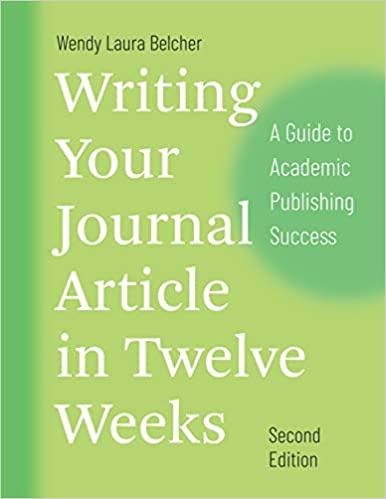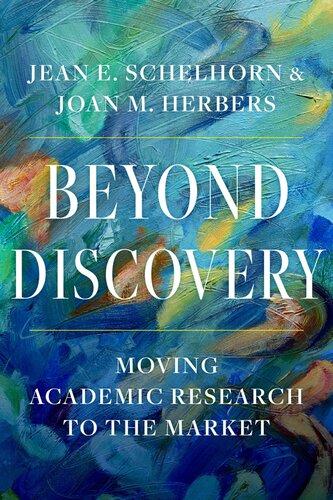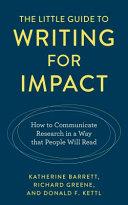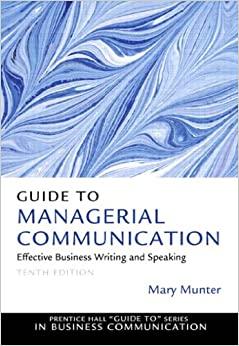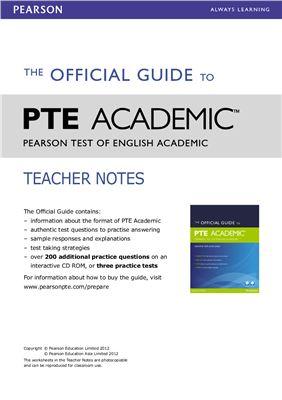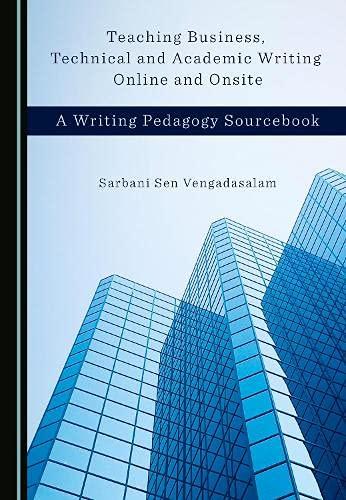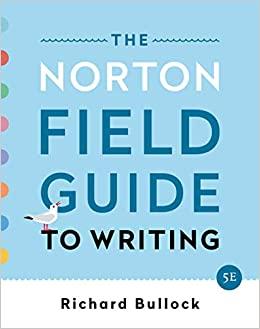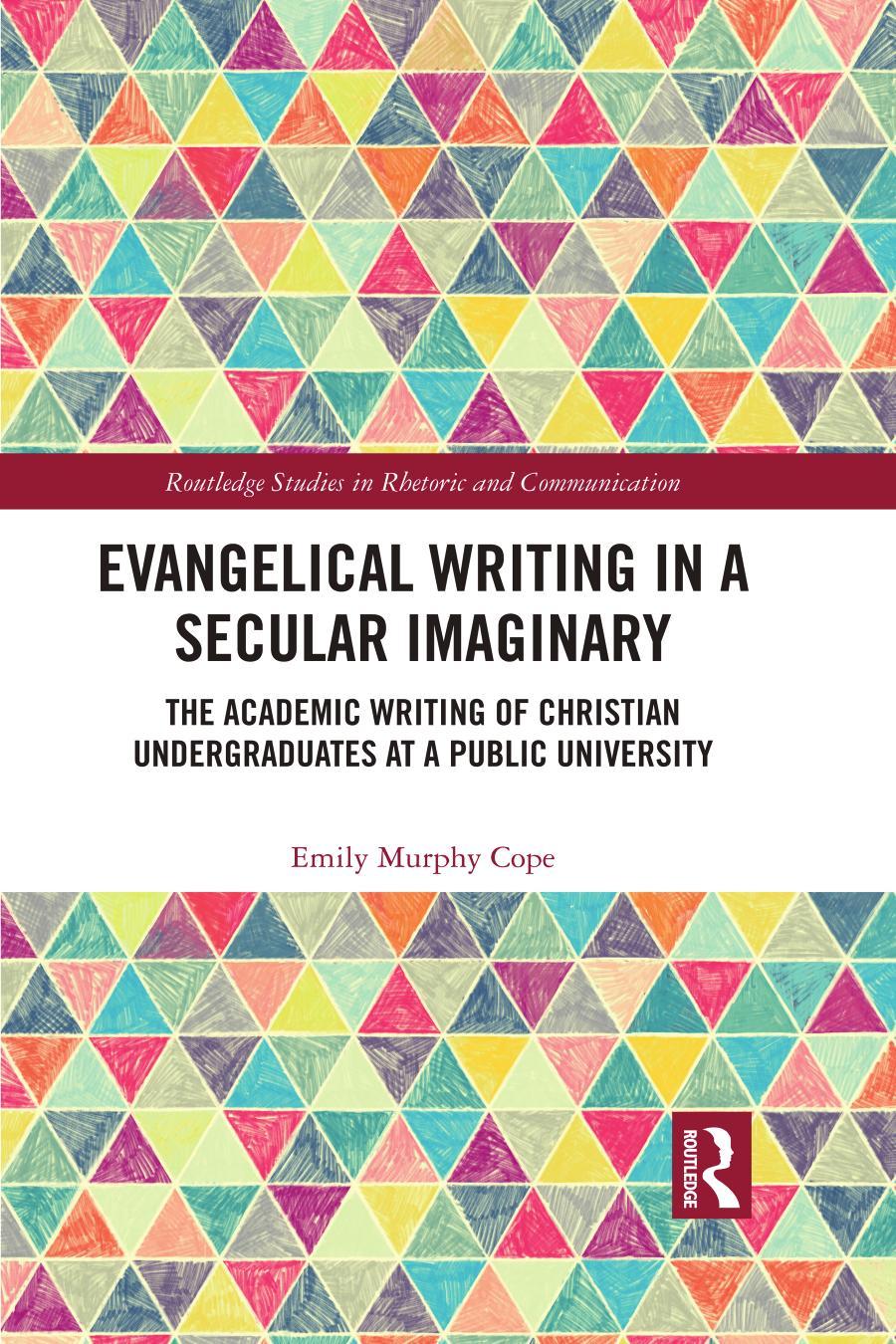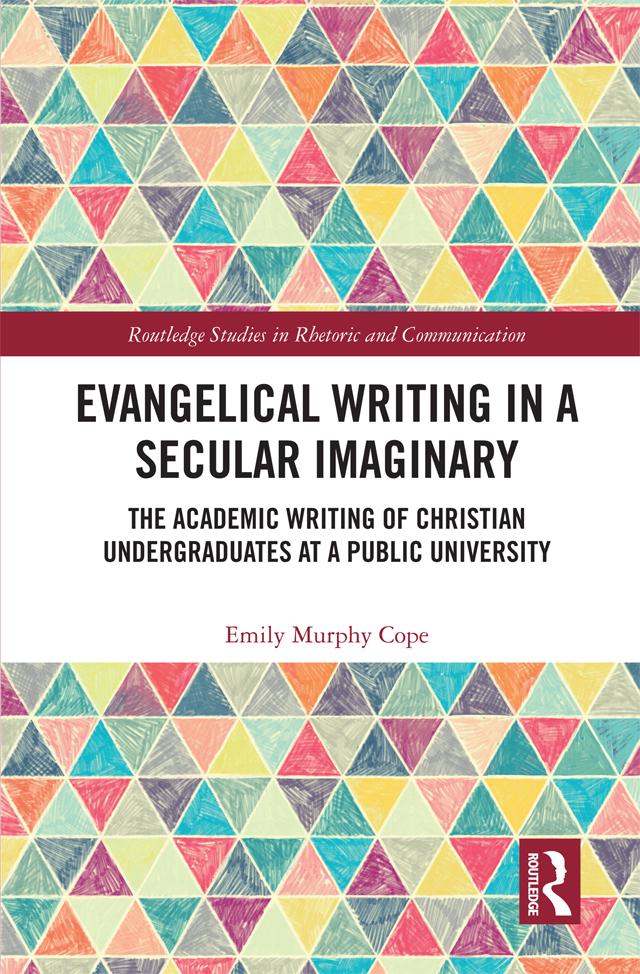AGuidetotheScientificCareer
Virtues,Communication,Research,andAcademicWriting
Editedby
MohammadaliM.Shoja,MD
TuberculosisandLungDiseaseResearchCenter,TabrizUniversityofMedicalSciences,Tabriz,Iran DivisionofGeneralSurgery,UniversityofIllinoisatChicagoMetropolitanGroupHospitals, Chicago,IL,USA
AnastasiaArynchyna,MPH,CCRP
PediatricNeurosurgery,Children’sofAlabama,Birmingham,AL,USA
MariosLoukas,MD,PhD
DepartmentofAnatomicalSciences,St.George’sUniversitySchoolofMedicine,St.Georg’s Grenada,WestIndies
AnthonyV.D’Antoni,MS,DC,PhD
DivisionofAnatomy,DepartmentofRadiology,WeillCornellMedicine,NewYork,NY,USA
SandraM.Buerger,PhD
DepartmentofNaturalSciencesandMathematics,CollegeofGeneralStudies,BostonUniversity, Boston,MA,USA
MarionKarl,MFA,MS
LureAnimations,Reno,NV,USA
R.ShaneTubbs,Ph.D.,PA-C,MSc
SeattleScienceFoundation,Seattle,WA,USA
Thiseditionfirstpublished2020 ©2020JohnWiley&Sons,Inc
Allrightsreserved.Nopartofthispublicationmaybereproduced,storedinaretrievalsystem,or transmitted,inanyformorbyanymeans,electronic,mechanical,photocopying,recordingorotherwise, exceptaspermittedbylaw.Adviceonhowtoobtainpermissiontoreusematerialfromthistitleisavailable athttp://www.wiley.com/go/permissions.
TherightofMohammadaliM.Shoja,AnastasiaArynchyna,MariosLoukas,AnthonyV.D’Antoni, SandraM.Buerger,MarionKarlandR.ShaneTubbstobeidentifiedastheauthorsofthiseditorialmaterial hasbeenassertedinaccordancewithlaw.
RegisteredOffices
JohnWiley&Sons,Inc.,111RiverStreet,Hoboken,NJ07030,USA
EditorialOffice
TheAtrium,SouthernGate,Chichester,WestSussex,PO198SQ,UK
Fordetailsofourglobaleditorialoffices,customerservices,andmoreinformationaboutWileyproducts visitusatwww.wiley.com.
Wileyalsopublishesitsbooksinavarietyofelectronicformatsandbyprint-on-demand.Somecontentthat appearsinstandardprintversionsofthisbookmaynotbeavailableinotherformats.
LimitofLiability/DisclaimerofWarranty
Whilethepublisherandauthorshaveusedtheirbesteffortsinpreparingthiswork,theymakeno representationsorwarrantieswithrespecttotheaccuracyorcompletenessofthecontentsofthisworkand specificallydisclaimallwarranties,includingwithoutlimitationanyimpliedwarrantiesofmerchantabilityor fitnessforaparticularpurpose.Nowarrantymaybecreatedorextendedbysalesrepresentatives,written salesmaterialsorpromotionalstatementsforthiswork.Thefactthatanorganization,website,orproductis referredtointhisworkasacitationand/orpotentialsourceoffurtherinformationdoesnotmeanthatthe publisherandauthorsendorsetheinformationorservicestheorganization,website,orproductmayprovide orrecommendationsitmaymake.Thisworkissoldwiththeunderstandingthatthepublisherisnotengaged inrenderingprofessionalservices.Theadviceandstrategiescontainedhereinmaynotbesuitableforyour situation.Youshouldconsultwithaspecialistwhereappropriate.Further,readersshouldbeawarethat websiteslistedinthisworkmayhavechangedordisappearedbetweenwhenthisworkwaswrittenandwhen itisread.Neitherthepublishernorauthorsshallbeliableforanylossofprofitoranyothercommercial damages,includingbutnotlimitedtospecial,incidental,consequential,orotherdamages.
LibraryofCongressCataloging-in-Publicationdataappliedfor
ISBN:9781118907429(Hardback)
CoverDesign:Wiley CoverImage:©DavidPerry/GettyImages
Setin10/12ptWarnockProbySPiGlobal,Chennai,India 10987654321
Contents
ListofContributors xxxiii
Preface xliii
SectionISuccessfulCareer 1
1DefiningandRe-DefiningSuccess 3
MohammadaliM.Shoja,R.ShaneTubbsandDanO’Brien
1.1Introduction 3
1.2SuccessMindsets 3
1.2.1SuccessIsaStateofMind 3
1.2.2SuccessinNotAccidental 4
1.2.3SuccessIsSimple 4
1.2.4SuccessIsanEver-ChangingState 4
1.2.5SuccessIsMeasurable 5
1.2.6SuccessMakesYouaBetterPerson 5
1.2.7HappinessandSuccessAreMutuallyInclusive 6
1.2.8SuccessandFameAreIndependent 6
1.2.9SuccessandFailureAreSelf-PerpetuatinginNature 6
1.2.10ValuesandSuccessAreNottheSameThings 6
1.2.11RelativityofSuccess:SuccessIsaSelf-DefinedPhenomenon 7
1.2.12ParetoPrinciple:TheMajorPartofSuccessComesfromaSmallFractionof OurDecisionsandActions 7
1.2.13The“Luck”Paradox 7
1.2.14OpportunitiesAreCreated 7
1.2.15FailureIsaKeytoSuccess 8
1.2.16SuccessIstheOutcomeofStruggleforExcellence,NotStrugglefor Winning 8
1.3PrerequisitesAreInternalFactorsRequiredtoBecomeSuccessful 8
1.4MethodsAreConsciousActionsOneShouldTaketoPavetheRoadto Success 11
1.5EnhancersorCatalystsAreExternalFactorsthatEnhanceOne’sChanceof Success 12
1.6InhibitorsAreInternalorExternalFactorsthatDiminishOne’sChanceof Success 12
Reference 13
2QualitiesofResearchScientists:PersonalityandLeadershipAttributes ofResearchTeamMembers 15 FredBertinoandMohammadaliM.Shoja
2.1Leadership 15
2.2PersonalityandInterpersonalRelationships 16
2.2.1RelationshipstoOthers:Extroversion(E)VersusIntroversion(I) 16
2.2.2HowInformationIsGatheredandMetabolized:Sensing(S)Versus Intuition(N) 17
2.2.3Decision-MakingAbility:Thinking(T)VersusFeeling(F) 17
2.2.4Organization:Judgment(J)VersusPerception(P) 17
2.3ContinuousSelf-Assessment 18
2.4TipsforDevelopingaLeader-QualityScientist 18
2.4.1BeanEntrepreneur 18
2.4.2WorkHardandWorkSmart 18
2.4.3Listen,Observe,andLearnonaDailyBasis 19
2.4.4Think,Plan,andTakeAction 20
2.4.5TranslateVisionintoReality 20
2.4.6EmpowerYourFollowers 20
2.4.7DelegateTasksWheneverFeasible 21
2.4.8EstablishPriorities 21 References 21
3BuildingaPersonalVisionStatement 25 GenevievePintoZipp
3.1PersonalVisionStatementandPortfolioOverview 25
3.2GettingStarted 25
3.3VisionStatementinAction 26
3.4RulestoGuideVisionStatementDevelopment 26
3.5Conclusions 27 References 28 FurtherReading 28
4CreativityandNovelHypotheses 29 AnthonyV.D’Antoni
4.1CreativityandScience 29
4.2WhatAreMindMaps? 29
4.2.1HowtoCreateMindMaps 30
4.2.2MindMapofaTextbookChapter 31
4.3MindMapsandNovelHypotheses 32 References 32
5ConfidenceandItsImpactonYourAspiringCareer 33 ToralR.Patel
5.1Introduction 33
5.2SourcesofConfidence 34
5.3InfluenceofConfidenceonYourCareer 35
5.4ConfidenceSpectrum 36
5.4.1LowConfidenceandInsecurity 36
5.4.2Overconfidence 36
5.5Dunning-KrugerEffect 37
5.6ImportanceofFeedback 38
5.7OvercomingConfidenceIssues 39 References 41
6CareerSatisfactionandItsDeterminants 45 NihalApaydin
6.1Introduction 45
6.2DeterminantsofCareerSatisfaction 45
6.2.1GenderandCareerSatisfaction 46
6.3CareerSatisfactioninMedicine 47
6.3.1CareerSatisfactioninPrimaryCarePhysicians 47
6.3.2ClinicalSpecialtiesandCareerSatisfaction 48
6.3.3DemographicDeterminantsofCareerSatisfactionAmongMedical Graduates 49
6.4ResearchandthePhysician-Scientist 49
6.5CareerSatisfactionandProductivity 50
6.6Conclusions 51 References 51
7SpiritualDimensionsofBiomedicalResearch 55 MarianaCuceu,BeatriceGabrielaIoan,MarcelCuceu,KyleE.Karches, CristinelStefanescuandAasimI.Padela
7.1Introduction 55
7.2VirtuesinResearch 56
7.3AChristian-PlatonicBackgroundofVirtues 57
7.4SkillsVersusWisdom 58
7.4.1WisdomIstheSpaceWhereScienceandReligionCanMeet 59
7.5ACrystallizingExample 60 Acknowledgment 60 References 60
8PublishinginAcademicMedicine:DoesItTranslateintoaSuccessful Career? 63
BradleyK.Weiner,PaigeVargoandJosephFernandez
8.1Introduction 63
8.2DisseminationofKnowledgeandImpactingPatientCare 63
8.3BecomingaRecognizedExpert 64
8.4AcademicPromotion 65
8.5ProfessionalStanding 65
8.6PersonalSatisfaction 65
8.7EditorialBenefits 66
8.8ProfessionalContacts 66
8.9Summary:DoesPublishingScholarlyArticlesTranslateintoaSuccessful ScientificCareer? 66 Reference 67
9AssessingaResearcher’sScientificProductivityandScholarly Impact 69
JohnPanaretosandChrisovalantisMalesios
9.1Introduction 69
9.2The h-Index 70
9.3Criticismsofthe h-Index 71
9.4ModificationsandExtensionsofthe h-Index 71
9.5AGeneralCriticismontheUseofMetrics 72
9.6CitationDataSources 74
9.7Discussion 74
References 76
FurtherReading 78
SectionIICommunication 81
10MannersinAcademics 83
R.ShaneTubbs
10.1GeneralAspects 83
10.1.1Accommodate 83
10.1.2Collaborate 83
10.1.3Facilitate 83
10.1.4Communicate 84
10.2MannersinAcademicWritingandPublishing 84
10.2.1DoAcademicMannersinWritingExist? 85
10.2.2WhatAreMannersinAcademicWriting? 85
10.2.3AreMannersinAcademicWritingNecessary? 85
10.2.4ThankingtheEditorandReviewers 85
10.2.5DoNotTakeReviewerCommentsPersonally 86
10.2.6TrytoAccommodatetheReviewer’sSuggestions 86
10.2.7RespecttoEditorialStaff 87
10.2.8RespectYourCo-Authors 87
10.2.9RespecttothePublisher 87
10.2.10RespectAuthorsWhoContribute 87
10.2.11AcademicMannersasaReviewer 88
10.3Conclusions 88
11EmotionalIntelligence:ItsPlaceinYourProfessionalandAcademic Careers 91
SandraBuergerandGernotBuerger
11.1Background 91
11.2TheImportanceofEQinAcademiaandontheJob 92
11.3MajorAspectsofEmotionalIntelligence 92
11.3.1Self-Awareness 92
11.3.2ManagingEmotions 93
11.3.3Motivation 93
11.3.4Empathy/SocialSkills 94
11.4DevelopingEQ 94 References 95
12CommunicationSkills 97
SandraBuerger
12.1Introduction 97
12.2EffectiveCommunication 97
12.3CommunicationintheScientificandMedicalCommunity 99
12.3.1WrittenCommunications 99
12.3.2InformalMeetings 100 References 101
13LearningCharisma 103
R.ShaneTubbs
13.1Introduction 103
13.2WhatIsCharisma? 103
13.3LearningHowtoBeCharismatic 104
13.4ImprovingYourCharisma 105
13.5Conclusions 106 References 107
14EssenceofCollaborativeResearch:Leadership,EngagingOthers,and Cooperativeness 109
RebeccaAndall,PetruMatusz,JerzyGieleckiandMariosLoukas
14.1Introduction 109
14.2WhyCollaborate? 110
14.3ChallengestoCollaborativeResearch 110
14.4EthicalConsiderations 110
14.5HowtoMakeCollaborationsWork 111
14.6Conclusions 111 References 111
15PersonalBrandingforPhysiciansandResearchers 113
TracyE.Bunting-Early
15.1Introduction 113
15.2PersonalBrandingandAuthenticity 113
15.3YourBrandPlan:DefiningYourPositioning 114
15.3.1PositioningExamples 116
15.3.1.1Case1:ACommunityPediatrician 116
15.3.1.2Case2:ACommunitySurgeon 116
15.3.1.3Case3:AClinicalOncologist/ResearcheratanAcademicHospital 117
15.4CreatingYourBrandElements 118
15.4.1BrandElementsExamples 118
15.4.1.1Case1:ACommunityPediatrician 118
15.4.1.2Case2:ACommunitySurgeon 119
15.4.1.3Case3:AClinicalOncologist/ResearcheratanAcademicHospital 119
15.5StrategizingYourTactics 119
x Contents
15.5.1TacticalExamples 119
15.5.1.1Case1:ACommunityPediatrician 119
15.5.1.2Case2:ACommunitySurgeon 120
15.5.1.3Case3:AClinicalOncologist/ResearcheratanAcademicHospital 120
15.6ExecutingYourBrandPlan 121
15.7Conclusion 121
FurtherReading 121
16DealingwithManipulativePeople 123
GeorgeK.Simon
16.1TipsforAvoidingtheTrapsofaManipulator 125
16.1.1KnowtheKindofPersonsYou’reDealingWith 125
16.1.2EducateYourselfaboutManipulativeTactics 125
16.1.3DivestYourselfofHarmfulMisconceptions 128
16.2NeurosisversusPathology:AContinuum 128
16.3AggressivePersonalities 132
16.4TacticsUsedbytheCovert-Aggressor 133
16.4.1CovertIntimidation 133
16.4.2Lying 134
16.4.3Denial 134
16.4.4FeigningConfusion/IgnoranceandInnocence 135
16.4.5PlayingtheRoleofVictim 135
16.5TipsforSettingtheTermsofEngagement 136 Reference 137
SectionIIIResearchEthics 139
17HonestyandTruthinAcademicResearchandWriting 141
ThomasF.Lüscher
17.1Introduction 141
17.2Truth 141
17.3Honesty 142
17.4Dishonesty 143
17.5SpectrumofFraud 144
17.6LearningfromthePast 145
17.7ThePatternofFraud 147
17.8ConflictsofInterest 148
17.9LessonsfortheFuture 149 Acknowledgment 151 References 151
18WritingandScientificMisconduct:EthicalandLegalAspects 155
MarcoenJ.T.F.Cabbolet
18.1Introduction 155
18.2EthicalAspects 155
18.2.1AvoidingType-OneScientificMisconduct 156
18.2.2AvoidingType-TwoScientificMisconduct 158
18.3LegalAspects 159
18.3.1BreachofContract 159
18.3.2CriminalLawViolations 160
18.3.3AdditionalConsequences 160 References 160
19PlagiarismandHowtoAvoidIt 163
IzetMasic
19.1Introduction 163
19.2DefinitionofthePlagiarismProblem 163
19.3AcademicIntegrityandPlagiarism 164
19.3.1PlagiarismbyStudents 165
19.3.2TheComplexityofPlagiarismamongStudents 165
19.3.3PlagiarisminMedicalSchoolsandColleges 166
19.4IntellectualDishonestyandPlagiarisminScience 166
19.4.1CommitteeonPublicationEthics(COPE) 166
19.4.2TheEuropeanAssociationofScienceEditors(EASE) 168
19.5DetectionofPlagiarism:ElectronicTools 168
19.5.1ChoosingaTooltoDetectPlagiarism 172
19.6PreventionofPlagiarism:ABetterRemedy 173
19.6.1TeachingEthicalWriting 173
19.6.2ScreeningforPlagiarism 174
19.6.3ReducingStudentPlagiarism 174
19.7PenaltiesforPlagiarism 174
19.7.1TheDilemmaofWho,What,When,andHow 175
19.7.2PreventingandMonitoringStudentPlagiarism 175 19.8Conclusions 176 References 176 FurtherReading 177
20ConflictsofInterest:ASimpleExplanation 179
BradleyK.Weiner,LeslieA.DuncanandPaigeE.Vargo 20.1Introduction 179
20.2WhatIsaConflictofInterest? 179
20.2.1WhatAreOurPrimaryInterests? 179
20.2.2WhatAretheSecondaryInterests? 180
20.2.3WhatIsMeantbyUndulyInfluenced? 180
20.3WhyDoesAvoidanceorFullDisclosureofConflicts-of-InterestMatter? 180 Reference 181
21GenderDifferencesinMedicalResearchProductivity 183 PeterF.Svider,PriyankaShah,AdamJ.FolbeandJeanAndersonEloy
21.1Introduction 183
21.2GenderDifferencesinScholarlyProductivity 184
21.3GenderDifferencesinResearchFunding 184
21.4IssuesPotentiallyFacilitatingGenderDifferencesinResearch 185
21.4.1DiscriminationinAcademicMedicine 185
21.4.2FamilyResponsibilities 186
21.4.3PregnancyDuringResidencyTrainingandEarlyinOne’sAcademic Career 186
21.4.4RoleModelsandMentoring 187
21.4.5RegionalDifferences 187
21.4.6OtherConsiderations 187
21.5Conclusion 188
References 188 FurtherReading 191
SectionIVResearchRegulations 193
22InstitutionalReviewBoards:GeneralRegulations,Institutional Obligations,andPersonalResponsibility 195 AnastasiaA.Arynchyna,SarahB.PutneyandR.PeterIafrate
22.1IRBBackground 195
22.2RegulatoryFramework 196
22.2.1First:TheSourceofFundingorOtherSupport 196
22.2.2Second:TheSiteoftheResearch 197
22.2.3Third:HumanSubjectsinCertainVulnerablePopulations 199
22.2.4Fourth:ResearchorClinicalInvestigationswithRegulatedProducts 199
22.3IRBProcess 199
22.3.1IRBJurisdiction:ResearchwithHumanSubjects 199
22.3.1.1Definitions 200
22.3.1.2SomeItemsthatMayNotBeUnderYourIRB’sJurisdiction 200
22.3.1.3QualityImprovement(QI)Non-ResearchversusResearch 200
22.3.2TypesofIRBReviews 201
22.3.2.1NotHumanSubjectsResearch 201
22.3.2.2ExemptReview 201
22.3.2.3ExpeditedReview 201
22.3.2.4FullBoardReview 202
22.4InvestigatorResponsibilitiesinConductingHumanSubjectsResearch 202
22.4.1TrainingforInvestigators 202
22.4.2TheResponsibilitiesofaResearchInvestigator 204
22.4.2.1InformedConsent 204
22.5IRBApplication 205
22.6RelatedResearchCommittees 207
22.6.1HumanUseofRadioisotopesandRadiationCommitteeorRadiationSafety Committee 207
22.6.2InstitutionalBiosafetyCommittee(IBC) 207
22.6.3OtherPotentialCommitteesCouldInclude 207
22.7PublishingandtheIRB 208
22.8SelectedFrequentlyAskedQuestions(FAQs) 208
23InternationalResearchwithHumanSubjects 211
SarahB.Putney
23.1GeneralOverview 211
23.2RegulatoryandLegalFrameworksandIRBOversight 212
23.2.1IRBRegistrationandFederalWideAssurance 212
23.2.2FDAConsiderations 213
23.2.3Privacy 214
23.2.4Host-CountryIRB 214
23.3EthicalFramework 214 FurtherReading 217
SectionVResearchGrantsandProposals 219
24GrantsandFundingSources 221
JamieDowandChevisShannon
24.1Introduction 221
24.2GrantLifeCycle 221
24.3TypesofFundingOrganizations 222
24.3.1FederalFunders 223
24.3.2StateAgencies 223
24.3.3Foundations 223
24.3.4BusinessandIndustry 223
24.3.5ShowMetheMoney 224
24.4TypesofAgreements 224
24.5TypesofGrantApplications 226
24.6FederalGrantMechanisms 226
24.7CareerTimelineandNIHMechanisms 227
24.8FundingCycle 227
24.9SearchableDatabases 227
24.9.1GrantDatabases 229
24.9.2UsefulTools 230
24.10TimeCommitmentandInfrastructureandSupport 231
24.10.1TimeCommitment 231
24.10.2Infrastructure:PlanningWithinYourOrganization 231
24.11PostAward 232
24.11.1AwardNegotiation,Management,andSetup 232
24.11.2SettingUpYourSite 233
24.11.3ProgressReports 234
24.11.4AwardClose-outandRecordRetention 234 FurtherReading 234
25EssentialsofGrantWritingandProposalDevelopment 235
ChevisNShannonandJamieDow
25.1TheResearchPlan 235
25.1.1SpecificAimsandHypotheses 235
25.1.2BackgroundandSignificance 236
25.1.3PreliminaryStudies/Innovation 237
25.1.4ResearchDesignandMethods 237
25.1.4.1Approach 237
25.1.4.2StatisticalAnalysis 238
25.1.4.3RecruitmentandRetention 238
25.1.4.4DataMonitoringandRegulatoryRequirements 239
25.1.4.5Collaboration 240
25.2BudgetandBudgetJustification 240
25.2.1DirectCosts 241
25.2.2IndirectCosts 241
25.3GrantDocumentsandGrantFormatting 242
25.3.1GrantDocuments 242
25.3.2FormattingYourGrant 243
25.4Conclusions 243 FurtherReading 245
SectionVIResearchPrinciplesandMethods 247
26ClinicalResearchMethodsandDesigns 249 DaxaM.Patel,BeverlyC.WaltersandJamesM.Markert
26.1Introduction 249
26.2StructureofClinicalStudies 249
26.2.1ResearchQuestion 249
26.2.2BackgroundandSignificance 250
26.2.3StudyDesign 250
26.2.3.1ObservationalStudies 250
26.2.3.2ExperimentalStudies 255
26.3SampleSize,StudySubjects,andVariables 257
26.4FunctionalAspectsofClinicalStudies 258
26.5Epilogue 259 References 259
27RetrospectiveAnalysisfromaChartReview:AStep-by-Step Guide 263
PhilippHendrixandChristophJ.Griessenauer
27.1StepwiseApproachtoRetrospectiveStudies 263
27.1.1DefineaResearchQuestion 263
27.1.2SearchLiterature,CreateaBibliography,andReviewtheLiterature 264
27.1.3ReevaluatetheQuestion-TreeandVariables 264
27.1.4ObtainInstitutionalReviewBoardApproval 265
27.1.5DesignaDatasetandGathertheData 265
27.1.6PerformStatisticalAnalysis 266
27.1.7PreparetheManuscript 266 References 266
28Designing,Planning,andConductingClinicalTrials 267 RamónRodrigo,JuanGuillermoGormaz,MatíasLibuyandDanielHasson
28.1Introduction 267
28.2DesignofControlledClinicalTrials 268
28.2.1DefinitionandDesignBasics 268
28.2.2EthicalConsiderations 268
28.2.3CategorizationofControlledClinicalTrials 269
28.2.3.1CategorizationbySampleSize 269
28.2.3.2CategorizationbyDesign 269
28.2.4StructuringofControlledClinicalTrials 270
28.2.5Endpoints 270
28.2.6Sample-SizeEstimation 271
28.2.7EligibilityCriteria 271
28.2.8RandomAssignmentandMasking 272
28.3ProjectManagementandPlanningforClinicalTrial 272
28.3.1ControlandUniformityDevelopment 272
28.3.2InformedConsent 272
28.3.3Logistics,Roles,andOrganizationalStructure 273
28.4ConductofClinicalTrials 275
28.4.1BestPractices 275
28.4.2StartingtheTrial 276
28.4.3DataManagement 277
28.4.4QualityControl 277
28.4.5TrialEnding 277
28.5Conclusions 278 References 279
29AnimalModelsinScienceandResearch 281 RayGreek
29.1OverviewofUsingAnimalsinScience 281
29.2EvolvedComplexSystems 284
29.3Trans-SpeciesModelingTheory 287
29.4Conclusion 287 References 288 FurtherReading 290
30HowtoIdentifyaTimelyandRelevantTopicforaLiterature Review 295 SanjayPatel,JerzyGieleckiandMariosLoukas
30.1Introduction 295
30.2IdentifyingaRelevantandTimelyTopic 295
30.3NarrowingtheTopic 296
30.4LiteratureReviewsandClinicalPractice 296
30.5Conclusion 296 References 297
31TheStructureandConductofaNarrativeLiteratureReview 299 MarcoPautasso
31.1Introduction 299
31.2ReviewTeam 300
31.3TopicandAudience 301
31.4LiteratureSearch 301
31.5TakingNotes 302
31.6TypeofReview 302
31.7Balance 304
31.8Criticism,Consistency,Objectivity 304
31.9Structure 305
31.10FeedbackandRevision 306
31.11Dissemination 307 Acknowledgments 307 References 307
32AGuidelineforConductingSystematicReviews 311 PaulPosadzkiandEdzardErnst
32.1Introduction 311
32.2WhySystematicReviews? 311
32.3AGuidelineforConductingSystematicReviews 312
32.3.1AssemblingaTeamofExperts 312
32.3.2FindingaGapintheEvidenceBase 313
32.3.3AskingaFocusedResearchQuestion/ChoosingtheRightHypothesis 313
32.3.4ClearlyDefinedAimsandOutcomeMeasures 314
32.3.5ChoosingtheRightSearchTermsandDatabases 314
32.3.6DefiningEligibilityCriteria 315
32.3.7RunningtheSearches 315
32.3.8ManagingAbstractsandCoding 316
32.3.9RetrievingFull-TextVersions 316
32.3.10ExtractingData 316
32.3.11CriticallyAppraisingtheQualityofthePrimaryData 317
32.3.12AnalyzingtheData 317
32.3.13DiscussingtheFindings 317
32.3.14DrawingMeaningfulConclusions 317
32.3.15DraftingtheResearchPaper 318
32.3.16AssessingOne’sOwnPerformance 318
32.3.17Publishing 318
32.4WeaknessesofSRs 319
32.5SummaryandConclusions 319 References 319
33ClinicalManagementGuidelines 321
VijayM.Ravindra,WalavanSivakumar,KristinL.Kraus,JayK.Riva-Cambrinand JohnR.W.Kestle
33.1Introduction 321
33.2HowIsaClinicalGuidelineCreated? 321
33.3BenefitsandLimitationsofClinicalManagementGuidelines 323
33.3.1Benefits 324
33.3.1.1BenefittoPatients 324
33.3.1.2BenefittoHealthcareProfessionals 324
33.3.1.3BenefittoHealthcareSystems 324
33.3.2Limitations 325
33.3.2.1HarmtoPatients 325
33.3.2.2HarmtoHealthcareProfessionals 325
33.3.2.3PotentialHarmtoHealthcareSystems 326
33.4MedicolegalImplicationsofClinicalGuidelines 326
33.5Conclusions 327 References 327
34WhyIstheHistoryofMedicineandBiologyImportant? 331 PaulS.Agutter
34.1TheValueofKnowingOurHistory 331
34.2AnIllustration:RudolfVirchow 331
34.3Conclusions 333 References 334
35HistoricalArticles:AMethodologyGuide 335 AnandN.BosmiaandMohammadaliM.Shoja
35.1GeneralGuidelines 335
35.1.1Step1:IdentifytheSubject 335
35.1.2Step2:IdentifyaMentor 335
35.1.3Step3:ListPotentialDatabasesforReferences 336
35.1.3.1RulesforNavigatingDatabases 336
35.1.4Step4:FindaSampleArticle 337
35.1.5Step5:WritetheFirstDraft 337
35.1.6Step6:AddImagestotheArticle 337
35.1.6.1Copyrights 338
35.1.7Step7:SubmittheManuscript 338
35.2TypesofHistoricalArticles 339
35.2.1BiographicalArticles 339
35.2.1.1ClassicBiographicalArticles 339
35.2.1.2Obituaries 339
35.2.1.3Commemorations 339
35.2.1.4AutobiographicalArticles 339
35.2.2Articleson MateriaMedica340
35.2.3Translations 340
35.2.4ArticlesontheHistoryofScience 341
35.2.4.1Cross-SectionalHistoricalArticles 341
35.2.4.2LongitudinalHistoricalArticles 341
35.2.5CorrectiveHistoricalArticles 341 References 342
SectionVIIPublicationandResources 343
36AnIntroductiontoAcademicPublishing 345
MohammadaliM.ShojaandR.ShaneTubbs
36.1Introduction 345
36.2ManuscriptSubmission 345
36.3Peer-ReviewProcess 346
36.3.1ManuscriptRevisionandResubmission 347
36.4AftertheManuscriptisAcceptedforPublication 348
36.4.1PublishingAgreementandOtherPre-publicationForms 348
36.4.2Copyediting 348
36.4.3Typesetting,PageProofs,andProofreading 349
36.5FinalPublication 349
37VariousTypesofScientificArticles 351
JoséFlorencioF.LapeñaandWilfredC.G.Peh
37.1Introduction 351
37.2PrimaryorOriginal-ResearchArticles 351
37.3SecondaryorReviewArticles 353
37.4SpecialArticles 353
37.5TertiaryLiterature 354
37.6GrayLiterature 354
37.7Conclusions 355 References 355
38Authorship 357 StephenW.Carmichael
38.1EraofCollaborativeResearch 357
38.2GivingCredittoCollaborators 357
38.3AssigningAuthorship 357
38.4CorrespondingAuthor 358
38.5EthicalResponsibility 359
38.6Conclusions 359 Acknowledgments 359 FurtherReading 360
39Recognition,Reward,andResponsibility:WhytheAuthorshipof ScientificPapersMatters 361 ElizabethWager
39.1WhyDoestheAuthorshipofScientificPapersMatter? 361
39.2WhatIsAuthorship? 361
39.3WhatGuidelinesonAuthorshipAreAvailable? 362
39.4SolutionstoAuthorshipProblems 363
39.5Conclusion 367 Acknowledgment 367 References 368
40BiomedicalJournals:ScientificQuality,Reputation,andImpact Factor 369
KatherineG.Akers
40.1Introduction 369
40.2TheJournalImpactFactor 369
40.3AlternativestotheJournalImpactFactor 370
40.4CaveatstoInterpretingtheJournalImpactFactor 372
40.4.1JournalImpactFactorsShouldNotBeComparedAcrossDisciplines 372
40.4.2JournalImpactFactorsShouldNotBeUsedtoEvaluateIndividualJournal Articles 372
40.4.3JournalImpactFactorsShouldNotBeUsedtoEvaluateResearchers 373
40.5Conclusions 373 References 374
41ScholarlyOpen-AccessPublishing 377
JeffreyBeall
41.1Introduction 377
41.2MonitoringScholarlyOpen-AccessPublishing 379
41.3PredatoryPublishers 380
41.4DiscoveringOpen-AccessPublications 383
41.5TheAdvantagesandDisadvantagesofPublishinginOpen-Access Journals 383
41.6TheFutureofOpen-AccessPublishing 384
41.7WhyOpen-AccessPublicationsAreGaininginAppreciation 385
41.8HowtoRecognizePredatoryJournals 386 References 387
42HowtoFindaSuitableJournalforYourManuscript 389
MohammadaliM.Shoja,ThomasP.WalkerandStephenW.Carmichael 42.1Introduction 389
42.2InitiallyDecidingonWhichJournaltoPublish 390
42.3FactorstoConsiderinSelectingaSuitableJournal 390
42.3.1Audience 390
42.3.2FitnessFactor:JournalScopeandAim 391
42.3.3Journal’sPublishingTrendandPriorities 392
42.3.4JournalImpact,Prestige,andReputation 392
42.3.5ExpertOpinions 395
42.3.6EditorialOfficeStandardsandEfficiency 395
42.3.7Time,Publishing,andDistributionFactors 396
42.3.8Costs 396
42.3.9DifficultyofAcceptance 397
42.3.10AbstractandIndexingServices 397
42.3.11LanguageFactor 397
42.3.12OtherFactors 398
42.4RecommendedApproach 399
42.5ContactingtheEditorialOffice 399
42.6AcceptableFormatforManuscripts 400
42.7HandlingaNegativeEditorialDecision 400
42.8ThePossibleOutcomesofSubmittingtoanUnsuitableJournal 401 References 401
43ScientificPeerReview 403
ChristophJ.GriessenauerandMichelleK.Roach
43.1Introduction 403
43.2HistoryofPeerReview 403
43.3Process 404
43.4Criticism 405 References 406
44HowtoReplytoEditorsandReviewers 407 PaulTremblay
44.1YouReceivetheDecisionLetter… 407
44.2Context 408
44.3TypesofDecisionLettersandHowtoAnswer 410
44.3.1Rejection 411
44.3.2ReviseandResubmit(R&R) 413
44.4AfterYouResubmitted 415
44.5Conclusion 416 References 416
45CausesofManuscriptRejectionandHowtoHandleaRejected Manuscript 419
SungDeukKim,MatuszPetru,JerzyGieleckiandMariosLoukas
45.1Introduction 419
45.2DealingwiththeCommonCausesofRejection 419
45.2.1Journal’sSpecificRequirementsAreNotFollowed 419
45.2.2AuthorFailstoReviseandResubmitaManuscript 420
45.2.3SubjectMatterIsOutsideJournal’sScope 420
45.2.4TheManuscriptIsPoorlyWritten 420
45.2.5TheStudyDesignHasaSeriousFlaw 420
45.2.6TheManuscriptHasanInadequateDescriptionoftheMethods 421
45.2.7TheResultsAreNotCorrectlyInterpreted 421
45.2.8PlagiarismorDuplicationIsInvolvedintheManuscript 421
45.3Summary 421
45.4Conclusions 421 References 422
46ResourcesandDatabases 423 KoichiWatanabe
46.1ReferenceSearchUsingTextbooks 423
46.2ReferenceSearchUsingWebsites 423
46.2.1MedicalDatabases 424
46.2.2Keywords 424
46.2.3SearchOperatorsandAdvancedSearch 426
46.2.4RetrievedEntriesorSearchResults 427
46.3OtherSources 428 FurtherReading 428
47Research:AConstructDefinedbyContext 431
MichaelDieter
47.1Introduction 431
47.2ResearchLiteracy:AMindsetandSkillsetforSelf-CriticalSystematic Inquiry 431
47.3DefiningandPlanningtheResearchContext:TheResearchProposal 433
47.4EvaluatingResearchResources:Self-ReflectiveResearchPractice 433
47.5MeaningandContext:ASelf-CriticalPerspective 437 References 437
48CriticalEvaluationoftheClinicalLiterature 441
JacopoButiandFaizanZaheer
48.1Introduction 441
48.2CriticalAppraisalofaScientificArticle 442
48.3IstheStudyValid? 443
48.3.1ResearchQuestion 443
48.3.1.1Relevance 443
48.3.1.2ScientificContribution 443
48.3.1.3PertinencetotheStudyDesign 443
48.3.1.4Structure 444
48.3.2Bias 444
48.3.2.1SelectionBias 445
48.3.2.2PerformanceBias 445
48.3.2.3DetectionBias 445
48.3.2.4AttritionBias 446
48.3.2.5ReportingBias 446
48.3.2.6OtherBiases 446
48.3.3TheGradingSystemforStudyQuality 447
48.4WhatAretheResults?AssessingandAnalyzingResultsofaStudy 449
48.4.1Variables 449
48.4.2TypesofDataandScalesofMeasurement 449
48.4.2.1CategoricalData 449
48.4.2.2NumericalData 449
48.4.3DescriptiveStatistics 450
48.4.4InferentialStatistics 450
48.4.4.1SampleandPopulation 450
48.4.4.2StandardErroroftheMean(SEM) 451
48.4.4.3ConfidenceInterval(CI) 451
48.4.4.4HypothesisTesting 451
48.5AretheResultsUseful?FromResearchtoClinicalPractice 452
48.5.1ClinicalversusStatisticalSignificance 452
48.5.2ExternalValidity 453
48.6TheResearchWorld 453
48.6.1ThePeer-ReviewProcess 453
48.6.2ScienceCitationIndex 454
48.6.3ImpactFactor 455
48.6.4BibliographicDatabases 455
48.6.5ConflictofInterest 455
48.6.6TheRoleofClinicalPracticeGuidelines 456 References 456
SectionVIIITechnicalWriting 457
49WritingforYourAudience 459
MariaJ.Grant
49.1Introduction 459
49.2WhoIsYourAudience? 459
49.3WhereIsYourAudience? 459
49.4HowDoesYourAudienceInformYourWritingStyle? 460
50PrinciplesofWritingaGoodScholarlyPaper 463
S.JaneMillward-Sadler
50.1WhatIsaGoodPaper? 463
50.1.1Simplicity 463
50.1.2Focus 463
50.1.3PunctuationandGrammar 464
50.1.4StructureandStyle 464
50.2OrderofWriting 464
50.3Draft,Draft,andRedraft 465
50.4Conclusions 465 FurtherReading 465
51TipsforScientificWriting 467
MarkP.Henderson
51.1ProfessionalPublications 467
51.2ManuscriptsRequireRepeatedRevisionBeforeTheyAreSubmittedfor Publication 468
51.3EstablishtheRightMindsetbeforeYouWrite 468
51.4RememberWhoYourReadersAre 469
51.5HowtoConveyYourFindings 469
51.6Keeping“Discussion”SectionsunderControl 469
52PerspectivesofaMedicalEditor 471
MarilynMichaelYurk
52.1EveryoneNeedsanEditor 471
52.2WhenPlanningYourForayintoAcademicWriting,KeepItSimple 471
52.3LearntoUseaGoodReferenceSoftwareProgram 472
52.4BecomeYourOwnLineEditor 473
52.5MinimizeAcronyms 473
52.6BewareofPredatoryJournals 475
52.7CheckYourNumbers–ThenCheckThemAgain 475
52.8FullyInvolveYourCo-authors 475
52.9ObservetheCopyrightLaws 476
52.10OnceYourAcceptedArticleIsinProduction,CheckYourProof Carefully 476 References 476
53TheArtofOrganizingYourResearchContent 477 KristinN.Mount
53.1TheArtofOrganizingYourResearchContent 477
53.2TheOutline 478
53.3OrganizationbySection 478
53.3.1TheTitlePageorCoverPage 479
53.3.2TheTableofContents 480
53.3.3TheAbstract 480
53.3.4TheIntroduction 480
53.3.4.1ResearchQuestion 480
53.3.5LiteratureReview 481
53.3.6TheMaterialsandMethods 481
53.3.7TheResults(orFindings) 482
53.3.8TheDiscussion 483
53.3.9TheConclusions 483
53.3.10TheReferences 483
53.3.11OtherSections 483
53.4HowtoApproachContentOrganization 484 References 484
54EconomyofWriting:HowtoWriteTechnicalContent 485 ArthurC.Croft
54.1Planning 485
54.2TheProcess 486
54.2.1Title 486
54.2.2Abstract 486
54.2.3Keywords 487
54.2.4TheIntroduction 487
54.2.5MaterialsandMethods 488
54.2.6Results 491
54.2.7Discussion 491
54.2.8Conclusion 492
54.2.9BulletorTake-HomePoints 493
54.3GeneralWritingIssues 493
54.3.1Referencing 493
54.3.1.1Don’tBeaReferenceSnob 494
54.3.1.2ExceptionstotheRule 494
54.3.1.3TheReferenceManager 494
54.3.2ElementsofStyle 495
54.3.3ElementsofContent 496
54.3.4ColorSpace 497
54.3.5SomeCommonStatisticalFauxPas 500
54.3.5.1ExtrapolatingBeyondYourData 500
54.3.5.2TheAbsenceoftheStatisticalProcess 501
54.3.5.3SelectingtheWrongStatistic 501
54.3.5.4CastingtheNetWideandFar 501
54.3.5.5TheMathematicalCouplingError 503
54.3.5.6MisinterpretingtheMeaningof p-Values 503
54.3.5.7UsingSEMInsteadofSD 503
54.3.6Gail’sFallacy 504
54.3.7AuthorshipContribution 504
54.4Epilogue 504
55WritinganEffectiveTitleandAbstract 507 SandraBuerger
55.1AnEffectiveTitle 507
55.2PreparationoftheAbstract 508
55.2.1WhentoPreparetheAbstract/StartingtoWrite 508
55.3FeaturesofaQualityAbstract 508
55.3.1GeneralFeatures 508
55.3.2TheStructuredAbstract 509
55.3.3PartsoftheAbstract(forOriginalResearchArticles) 509
55.4EditingoftheAbstract 510
55.4.1HowtoEditforBrevity 510
55.4.2ReviewbyOutsideAuthors 510
55.4.3Submission 510 FurtherReading 511
56WritingtheResultsSection 513
BulentYalcin
56.1Introduction 513
56.2Content 513
56.3Language,Style,andOrganization 516
56.4AccuracyofFindingsandPresentationofData 520
56.5UseofTablesandIllustrativeMaterials 520 References 521
57WritingtheDiscussionSectionforOriginalResearchArticles 523
AyhanCömertandEyyubS.M.Al-Beyati
57.1Introduction 523
57.2PurposeofaDiscussionSection 524
57.3WhatandHowtoDiscuss 524
57.3.1MainStudyFindings 524
57.3.2ExpectationsandLiterature 525
57.3.3StrengthsandLimitations 525
57.3.4FurtherStudies 525
57.3.5Take-HomeMessage 526 References 526
58ReportingaClinicalTrial 527
DirkT.Ubbink
58.1Evidence-BasedMedicine 527
58.2QualityofClinicalTrials 528
58.3WritingYourManuscript 529
58.3.1Title 529
58.3.2Abstract 529
58.3.3IntroductionSection 529
58.3.4PatientsandMethodsSection 532
58.3.5StatisticalAnalysis 535
58.3.6ResultsSection 535
58.3.7DiscussionSection 538 References 538
59PublishingaCaseReport 541
S.JaneMillward-SadlerandMohammadaliM.Shoja
59.1Introduction 541
59.2CliniciansAreRichSourcesforUniqueMedicalandSurgicalCases 541
59.2.1Collaboration 542
59.2.2UsingtheLiteraturetoHelpwithIndividualPatients 542
59.3TheImportanceofPublishingCaseReports 542
59.4WhenShouldaCaseReportBeWritten? 543
59.5IfYouPublishYourCaseReport,WhoWillBeInterested inReadingIt? 543
59.6DoYouHaveSufficientMaterialforaCaseReport? 544
59.7ChoosingtheRightJournal 544
59.7.1TraditionalorOpenAccess? 544
59.7.2JournalScopeandReadership 544
59.8EthicalConsiderations:PatientandInstitution 547
59.8.1Principles 547
59.8.2WhyDoWeNeedEthics? 548
59.8.3EthicalConsiderationsinClinicalResearch 548
59.8.3.1Patients 548
59.8.3.2TheInstitution 548
59.8.3.3ExperimentalAnimals 548
59.8.4EthicalIssuesinPublishingCaseReports 549
59.9FromCaseStudiestoLarge-ScaleClinicalStudies 549 References 550
60WritingEditorials 551
NaomiAndall,BhartiBhusnurmath,ShivayogiBhusnurmathandMariosLoukas
60.1WhatIsanEditorial? 551
60.2WhoCanWriteanEditorial? 551
60.3ContentsofaTypicalEditorial 551
60.3.1TitleandIntroduction 552
60.3.2DiscussionandAnalysis 552
60.3.3TheFinalMessage 552
60.4KeyPointforWritingEditorials 552 References 553
61WritingaLettertotheEditor 555
HaleyJ.MoonandJoelA.Vilensky
61.1WhatIsaLettertotheEditor? 555
61.2HowtoApproachWritingaLettertotheEditor 555
61.3WhatHappensWhenYourLetterHasBeenAccepted? 556 FurtherReading 557
62WritingaBookReview 559
JamesHartley
62.1Introduction 559
62.2StrategyforCraftingBookReviews 559
62.3NegativeandPositiveBookReviews 560
62.4EditorialGuidance 561
62.4.1UnsolicitedBookReviews 562
62.5ChecklistforWritingaBookReview 562 References 563
63UseofIllustrationsandFigurestoEnhanceScientificPresentations andPublications 565 MarionKarl
63.1Introduction 565
63.2WhatIsMedicalIllustration? 565
63.3TypesofIllustrations 566
63.4IllustrationsandResearchDesign 566
63.5SourcingIllustrations 567
63.6Collaborations 568
63.7Conclusion 568 FurtherReading 569
64HowtoPrepareSupplementalMaterialsforScientific Publications 571
BarbaraJ.Hoogenboom
64.1Introduction 571
64.2DefinitionofSupplementalMaterials 571
64.3HowtoDecideWhatIsSupplementary 572
64.4TypesofSupplementalMaterialsandHowtoPrepareThem 573
64.5OnlineStorageandAccess 574
64.6Conclusions 574 References 575
65Reference-ManagementSoftware 577
PaulTremblayandThomasP.Walker
65.1Introduction 577
65.2SituationalExample 578
65.3WhatIsontheMarket? 580
65.4WhattoExpectfromanRMS 583
65.5WorkinginCollaborationandSharing 587
65.6In-ComputerversusCloud 587
65.7AllIsWell?WhatDoestheFutureHold? 588
References 589
FurtherReading 589
SectionIXBiostatistics
591
66BasicStatisticalAnalysisforOriginalStudies 593
GaneshN.Dakhale,SachinK.Hiware,AvinashV.Turankar,MohiniS.Mahatmeand SonaliA.Pimpalkhute
66.1Introduction 593
66.2MeasuresofCentralTendencies 593
66.3TypesofData 594
66.4DistributionofData 594
66.4.1Gaussian(Normal)Distribution 594
66.4.2Non-GaussianDistribution 595
66.5Transformation(Normalization)ofData 596
66.6MeasuresofVariability 596
66.6.1StandardDeviation(SD) 596
66.6.2StandardErrorofMean(SEM) 597
66.6.3ConfidenceInterval(CI) 597
66.7 P -ValueanditsImportance 597
66.7.1Errors 598
66.7.1.1TypeIError(FalsePositive) 598
66.7.1.2TypeIIError(FalseNegative) 598
66.8Outliers 598
66.9VariousStatisticalTestsandtheirUses 598
66.9.1ParametricTests 599
66.9.2Student’s t -Test 599
66.9.3One-WayANOVA 599
66.9.3.1Post-hocTests 599
66.9.3.2SelectionoftheAppropriatePost-hocTest 600
66.9.4Two-WayANOVA 600
66.10NonparametricTests 600
66.10.1Chi-squareGoodness-of-FitTest 600
66.10.1.1Applications 600
66.10.1.2Preparationofa2 × 2Table 601
66.10.2WilcoxonMatchedPairsSignedRanksTest 601
66.10.3Mann-WhitneyTest 602
66.10.4FriedmanTest 602
66.10.5Kruskal-WallisTest 602
66.11StatisticalPower 602
66.12DeterminationofSampleSize 603
66.13EstablishingaStatisticalRelationship 603
66.13.1Correlation 603
66.13.2Regression 604
66.14InterpretationofInteractions 604
66.15DeterminationofStatisticalCausality 605
66.16AdjustmentofCovariatesinClinicalTrials 605
66.17StatisticalSoftwarePackages 606
Acknowledgments 606
References 606
FurtherReading 606
67AnOverviewofSystematicReviewandMeta-Analysis 609 AnthonyV.D’AntoniandLorettaCacace
67.1SystematicReviewsandMeta-Analyses 609
67.2StructureofaMeta-Analysis 610
67.2.1Title 610
67.2.2StructuredAbstract 610
67.2.3Introduction 610
67.2.4Methods 611
67.2.5Results 612
67.2.6Discussion 613
67.3RoleofMeta-AnalysisinEvidence-BasedMedicine 613
67.4CriticalAppraisalSheetforSystematicReviews 614 References 614
68AnIntroductiontoMeta-Analysis 615
ArindamBasu
68.1Introduction 615
68.2StepOne:FrameaStudyQuestion 618
68.2.1HowtoSelectQuestions 618
68.2.2PICOFormat 619
68.2.3TooNarrowVersusTooBroadMeta-Analysis 620
68.3StepTwo:SearchtheLiteratureandConductInitialScreening 620
68.3.1UseControlledVocabulary 621
68.3.2UseSpecializedDatabases 621
68.3.3UseBooleanLogic-BasedSearchingofLiterature 621
68.3.4UseValidatedSearchFilters 622
68.3.5UnderstandGrayLiteratureandHandSearch 623
68.3.6NeedforInclusionandExclusionCriteria 623
68.4StepThree:ConductRiskofBiasAppraisalofFullTexts 624
68.5StepFour:AbstractDatafromIndividualStudies 626
68.5.1Outcomes 627
68.5.2HowtoAbstractDataforBinaryOutcomesandContinuousOutcomes 628
68.6StepFive:AssessWhethertheStudiesAreHomogeneous 630
68.6.1WhatHappensWhentheTestofHomogeneityFails 631
68.7StepSix:ConductFixedEffectsorRandomEffectsMeta-analysisand PerformSensitivityAnalyses 632
68.7.1Example:DoWhiteRespondsBetterthanBlackstoACEInhibitorsforthe TreatmentofHypertension? 632
68.8Conclusion 636 References 637
69MissingValues:HowtoTreatThemAppropriately 639
DavidC.Howell
69.1Introduction 639
69.2TypesofMissingness 639
69.2.1MissingCompletelyatRandom(MCAR) 640
69.2.2MissingatRandom(MAR) 640
69.2.3MissingNotatRandom 640
69.3LinearRegressionModels 641
69.3.1CasewiseDeletion 641
69.3.2PairwiseDeletion 641
69.3.3MeanSubstitution 642
69.3.4RegressionSubstitution(ImputationbyLeastSquares) 642
69.4ModernApproachestotheProblemofMissingData 642
69.4.1MaximumLikelihood 642
69.4.2Expectation–Maximization(EM) 643
69.4.2.1AnExample 644
69.4.3MultipleImputation 646 References 647
SectionXAcademicNetworking 649
70EssentialsofInterviewingforProspectiveMedicalStudentsand Residents 651
FredericJ.BertinoandTalalA.Kaiser
70.1TheImportanceofaGreatInterview 651
70.2GeneralInterviewSkills 651
70.3ConversationalAbility 652
70.4AdvocatingforOneself 652
70.5ANoteonHonesty 653
70.6ExplainingWeaknessesonanApplication 653
70.7Preparation:AMeansofReducingAnxiety 654
70.8PutYourBestFootForward:AttireandBehavior 654
70.9InterviewExpenses 654
70.10SchedulingtheInterview 655
70.11LearnabouttheProgram 655
70.12Pre-InterviewContact 656
70.13TheInterviewDay 656
70.14Post-InterviewContact 657
70.14.1CommunicationfromtheApplicanttotheProgram 657
70.14.2CommunicationfromtheProgramtotheApplicant 657
70.15KeyQuestionstoAskandBeAsked 657 FurtherReading 659
71ProfessionalandAcademicSocietiesandMeetings 661 PhilipR.Brauer
71.1AcademicSocieties 661
71.2ProfessionalSocieties 661
71.3CareerBenefits 661
71.3.1ResearchPresentations 661
71.3.2WorkshopsandTrainingOpportunities 662
71.3.3GrantsandTravel 662
71.3.4Recognition 662
71.3.5Networking 663
71.4GettingStarted 663
71.5Conclusions 664 References 665
72GettingtheMostfromAttendingaProfessionalMeeting 667 PeterJ.Ward
72.1Introduction 667
72.2ChoosingaMeeting 667
72.3BudgetingforTravelandHousing 669
72.4SurveyingtheSessions 669
72.5VisitingVendors/Publishers 670
72.6PresentingYourWorkorResearch 671
72.7GettingInvolved 672
72.8Follow-UpandFollow-Through 672 References 673
73FindingResearchOpportunitiesasaMedicalStudent 675 FredericJ.Bertino
73.1WhyPursueResearchasaMedicalStudent? 675
73.2ADisclaimer:WhatBenefitDoesResearchBringtotheMedical Student? 675
73.3BackgroundfortheStudent-Researcher 677
73.3.1HaveaResearchGoalandTimeFrameinMind 677
73.3.2QualityResearchProduction 677
73.3.3StudentProtectionandEthicalConsideration 678
73.4HowtoFindResearchOpportunitiesasaMedicalStudent 679
73.4.1BasicScienceResearch 679
73.4.2ClinicalScienceResearch 679
73.4.3ChoosingaViableProject 680
73.4.4TheLiteratureReview 680
73.4.5GoalReevaluation 681
73.5Conclusions 682
Acknowledgment 683
References 683
74AGuidetoWritingaCurriculumVitae 685 SanjayPatel,PetruMatuszandMariosLoukas
74.1Introduction 685
74.2WhatShouldBeIncludedintheCV? 685
74.3CoverPage 685
74.4PersonalData 686
74.5Education 686
74.6ProfessionalExperience 686
74.7AwardsandGrants 687
74.8Publications 687
74.9AdditionalCategories 688
74.10Formatting/Layout 688
74.11Conclusion 688
References 688
Index 691

